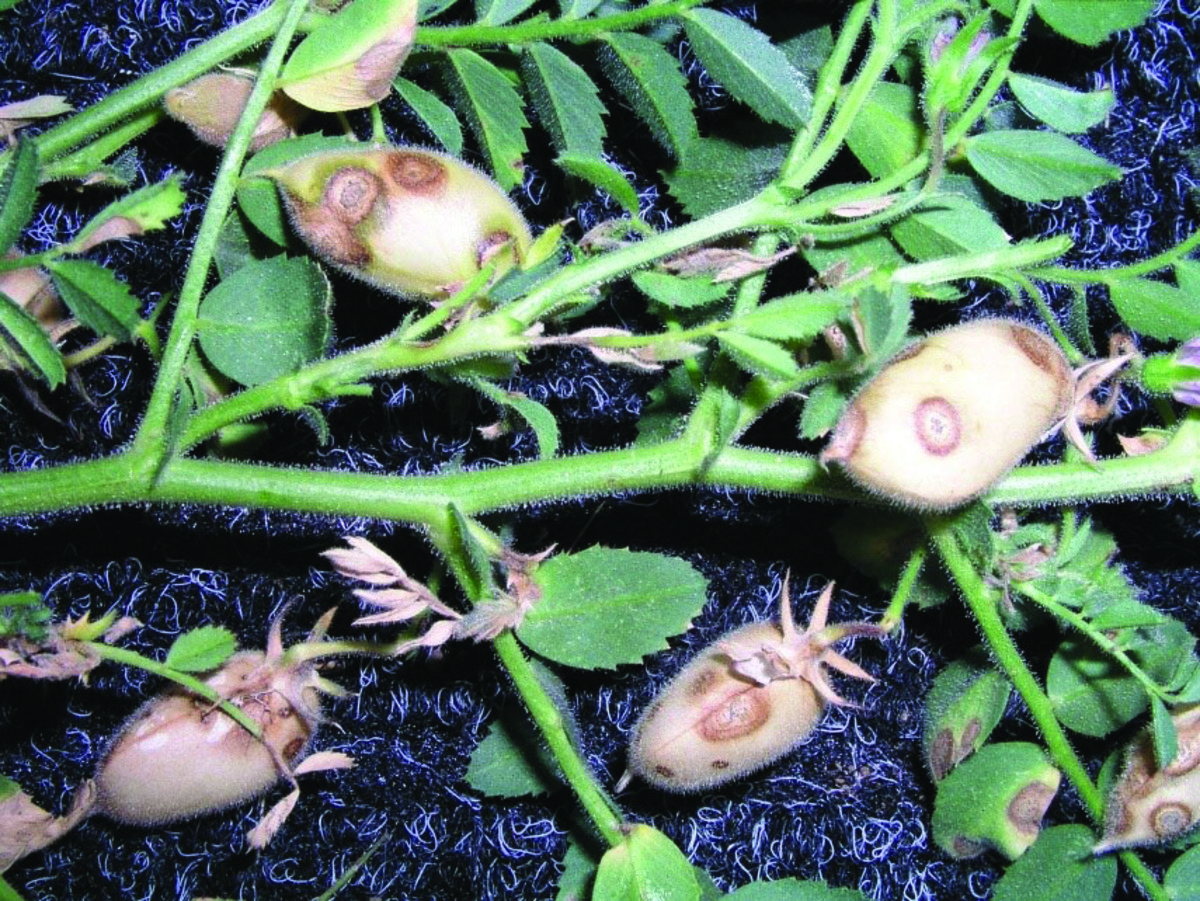Western growers keeping an eye out for Ascochyta
Oliver Brown
20 October 2021, 8:43 AM

CHICKPEA growers across the west are being urged to check their latest crop for signs of disease with recent wet seasons and rising temperatures showing some cause for concern.
Signs of the fungal disease Ascochyta Blight have been found in sample crops presented from a wide range of areas, including Coonamble, Walgett and Trangie.
Ascochyta affects a wide variety of pulse crops, including faba beans and chickpeas and cause lesions in pods which begin as pale green-yellow patches but later develop into small, round lesions with concentric circles of brown to black spots with dark brown margins.
Government agriculture research officer Hayley Wilson said the Ascochyta pathogen is very durable and can spread in infected seeds, stubble and volunteers, often through touch.
“It’s important that growers monitor their crops and understand their disease risk for each paddock,” Ms Wilson said.
“Growers should aim to apply an Ascochyta fungicide to crops before rainfall events and monitor the crops 10 to 14 days after each rainfall event.”
According to Coonamble-based agronomist and chickpea grower Alexander Deans, quite a few of the local samples provided to the government would have come from the Coonamble region.
He said he was finding more signs of infection in older varieties of chickpea like HatTrick.
“It’s more of a varietal issue at this stage - HatTrick is still grown quite a lot in this district, but of all varieties is the most susceptible of the commonly grown varieties because its resistance to Ascochyta has broken down over over time,” Mr Deans said.
“We are definitely more on alert this season - we’ve been monitoring crops pretty heavily and haven’t found a HatTrick crop yet without some sort of infection.”
Mr Deans agreed keeping an eye on all varieties was very important due to the destructive nature of Ascochyta.
“Chickpeas are a huge part of our rotation in the Coonamble and Walgett areas, purely off the back of the Fusarium found in many wheat crops last season - it’s a pretty tough little crop and can be quite lucrative,” he said.
“Ascochyta, if allowed to spread unchecked and untreated, could be devastating to crops.”
Ms Wilson and Mr Deans both said early intervention with a designated fungicide and nutrition was key to managing a potential crop outbreak of Ascochyta.
“Ascochyta fungicides (prodominantly) only protect the plant tissues to which they are applied. Any tissue that has fungicide applied is protected for the whole season, but new growth is not protected,” Ms Wilson said.
“If growers miss a preventative application before a rainfall event, there is some evidence that certain fungicides applied within 48 hours of the rain starting will stop new infections.”
“We found some early infections throughout the season which we controlled particularly with some of the new fungicide chemistry we have now,” Mr Deans said.
“We’ve rotated in conjunction with the more commonly used fungicides this year to try and get greater longevity - it also means we have a different mode of action approach to mitigate the risk of spread.”
According to Mr Deans, when the HatTrick variety’s resistance to Ascochyta began to break down back in 2016, many farmers started using other varieties which still have resistance like Seamer, including himself.
He said his Seamer crop was holding up well at this stage, as were Captain, and some of his Kabuli varieties, despite some small signs of infection.
“Seamer is the most widely grown variety to date, particularly due to its resistance to Ascochyta - this resistance has held up reasonably well, however we have found some instances where hotspots did occur in Seamer,” he said.
“However, I think that was more of a cross contamination issue than break down of resistance - there’s a chance there was the occasional HatTrick seed contaminating that seed sample.”
Mr Deans also said growers are on the lookout for signs of Botrytis grey mold, which could also be very devastating if left unchecked.
“Managing Botrytis is pretty critical at this important time prior to canopy closure in a favourable spring,” he said.
“We’ve been encountering perfect conditions for disease infestation.
“Our ultimate aim is to get early seed-born protection, early flower and pod and canopy protection.
“At the end of the day, fungi are created by humidity and moisture - when there’s air flow in a crop, mother nature then takes its course and prevents microclimates from forming, but that’s all driven by canopy closure.”
“The favourable spring conditions we are experiencing coupled with large crop canopies, above average rainfall and high humidity have resulted in the perfect conditions for disease infestation.”